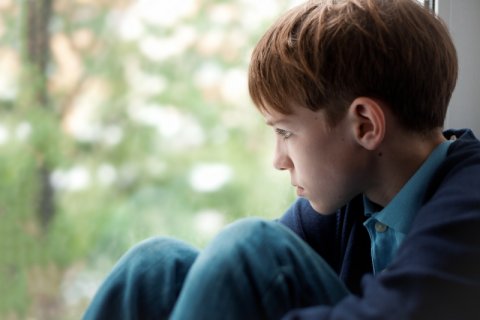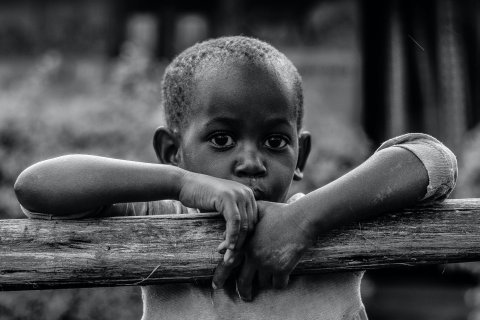News
On the 2nd December, the Youth Justice Board (YJB), an entity responsible for overseeing the youth justice system in England and Wales, published a series of materials whose aim is to understand how racial disparity affects children and young people both in their early years and within the youth justice system.
This publication, updated from 2020, pulls together a wide range of verified data to shed light on these disparities which affect children and young people in their formative years, in areas such as health, education, and interaction with the police, placing particular emphasis on the youth justice system. These materials include a three-page infographic which summarises some of the main findings, a Prezi presentation with an audio recording from the YJB youth ambassador, an accessible version of the presentation, and blog by the YJB Chair, Keith Fraser.
The LA Child project publishes guidelines to improve legal aid for children in conflict with the law
In the past month of October, the LA Child project published guidelines on legal aid for children in conflict with the law, which offer a series of recommendations and best practices aimed at supporting the work of professionals who have an impact on legal assistance for young people throughout the EU.
In the words of Benoît Van Keirsbilck, member of the UN Committee on the Rights of the Child and director of Defence for Children International Belgium, this guide “demonstrates sufficiently that one does not improvise oneself as a ‘child´s lawyer’ and that this function is certainly much more complex than many other services provided by lawyers.”
Different civil society organisations continue to collect information in order to learn about actions that are being implemented by juvenile justice systems in Latin America in the context of the COVID-19 pandemic. This is being carried out using two types of questionnaire adapted to the current situation: one aimed at the directors of detention centres, and the other directed at the operating authorities in the juvenile justice systems of different jurisdictions. The entities that have promoted this initiative are the United Nations Latin American Institute for the Prevention of Crime and the Treatment of Offenders (ILANUD); the Northwestern School of Law; Defence for Children International – Americas Region (DNI-Américas); Juvenile Justice Advocates; and Fair Trials.
Through this project, the organisations listed above are seeking the opportunity to share good practices at both a regional and national level within this area, systematising the information acquired via these questionnaires by country and publishing it through the Record of Practices Implemented by Juvenile Justice Systems in Latin America.
This initiative builds on the one undertaken in May 2020, when the…
The Fundamental Rights Agency (FRA) has recently published a report to encourage the reporting of hate crimes, which shows the barriers to this type of reporting which are found in the European Union and which make it difficult for victims to access protection and justice.
In this regard, the document shows that there are many victims who do not report attacks because it is either too difficult, or they do not trust the police, for which reason is it asked of European Union countries for them to guarantee that these people affected can get support, protection, and justice.
The report highlights the gaps in the reporting on these types of crimes, underlining certain aspects that must be kept in mind to improve this situation with regards to putting an end to discrimination and empowering victims, improving the processes for gathering information, making a record of it, and referring victims to the appropriate services, as well as developing the capacity to tackle hate crimes by different stakeholders, such as law enforcement officials.
The Youth Endowment Fund has recently launched a toolkit to prevent and reduce violence among youth. The toolkit is in its first version, which includes evidence about 13 different approaches in this field and is intended to help police forces, local authorities, and youth charities, amongst other groups. In addition, this resource will be updated every six months, including new contributions.
Included amongst the approaches evaluated in this toolkit are focused deterrence, Cognitive Behavioural Therapy (CBT), programmes concerning extracurricular activities, and programmes against bullying.
The Commission for Children and Young People of the Australian state of Victoria has published a report in which it seeks to put an end to the overrepresentation of Aboriginal children and young people in the youth justice system. In this regard, the entity states that in order to search for and implement potential solutions, children and young Aboriginals must be at the centre of these efforts, alongside their families, communities, and culture.
This report is the result of an inquiry that has produced 41 findings and 75 recommendations which, according to the Commission, can be implemented within five years. Furthermore, it seeks the implementation of both the better coordination of all services working with children and young people, and a group of measures aimed at minimising police contact, strengthening legal support and diversion measures, reducing the unnecessary use of remand, and shaping a justice system that focuses on prevention and early intervention at every stage.
In addition, The Commission for Children and Young People recommends that the minimum age of criminal responsibility be raised to 14 years old, in line with calls by national advocates for children’s…
Ireland has released a new Youth Justice Strategy for 2021 to 2027 developed under the guidance of an expert steering group chaired by James Browne, Minister of State at the Department of Justice. The strategy is based on child welfare principles, deriving in particular from the UN Convention on the Rights of the Child, and has been conceived as a developmental framework to set numerous actions and initiatives into motion.
The main objectives of this new strategy are premised on the need to maximise opportunities to promote positive behavioural change, including a wide range of issues relevant to children and young people at risk of coming into contact with the criminal justice system. In this sense, the strategy includes actions related to early prevention and intervention, family support, diversion measures, supervision and support in the community, amongst others. Lastly, it should be highlighted that the implementation of this strategy will prioritise enhancement of existing services such as the Garda Youth Diversion Projects (GYDPs), and the development of a range of more specialised and evidence-based interventions and programmes.
Scotland has become one of the first nations in the world, and the first in the UK, to directly incorporate the United Nations Convention on the Rights of the Child into its national legislation, which signals an important cultural and legal change with the capacity to transform the lives of Scottish children.
In this sense, it is worth pointing out that the Convention establishes the specific rights that all children have in order to help them reach their potential, including those that protect children that come into contact with justice systems. Within the framework of this direct incorporation of the Convention into Scottish law, Scottish public authorities are required to report every three years on how they are protecting the rights in question, granting children and their corresponding representatives, if necessary, the right to turn to courts to have their rights enforced.
Throughout three years, public authorities will be provided with a programme funded with more than 2 million pounds to enforce the legislation, including funding to guide them and give them the skills needed when it comes to implementing the law. Lastly, it is worth highlighting that efforts will be…
On the 24th of March, the European Commission adopted the first comprehensive EU Strategy on the Rights of the Child, as well as a proposal for a Council Recommendation establishing a European Child Guarantee to promote equal opportunities for children at risk of poverty or social exclusion, which complements the Strategy.
The new strategy, proposed at both the European and global level and developed via an enquiry which collected the views of over 10,000 children, both inside and out of the European Union, is structured around six different areas which cover themes such as child poverty, children’s participation in democratic life, and child friendly-justice. In this last area, the Strategy places an emphasis on actions geared towards specialised judicial training for professionals, the implementation of the Council of Europe’s Guidelines on Child Friendly Justice, and the use of alternatives to judicial action, amongst others.
Moreover, the Strategy focuses on ending all types of violence against children as one of its principal objectives, including support regarding gender-based and domestic violence, and an increase in the prevention of harmful practices against women and…
The High Representative of the Union for Foreign Affairs and Security Policy, Josep Borrell, and the Special Representative of the Secretary-General of the United Nations on the issue of children and armed conflict, Virginia Gamba, released a joint statement on the International Day against the Use of Child Soldiers, reaffirming their commitment to prevent the recruitment of children and assure both their liberation and reintegration into society.
In this text, Borrell and Gamba lamented that, “despite global commitments and efforts” to prevent recruitment, “children around the world continue to suffer from the consequences of conflicts and are still being used as expendable fuel of war”. They also highlighted that “education is crucial” to avoid this situation.
In this regard, they noted how “insecurity prevents thousands of children from accessing quality education and health care while schools and hospitals continue to be targeted”. Lastly, they have condemned the fact that, despite being victims, “children remain unlawfully in detention for their alleged or actual association with armed forces and groups”.
Poverty and the lack of opportunities, whose impact has been…









